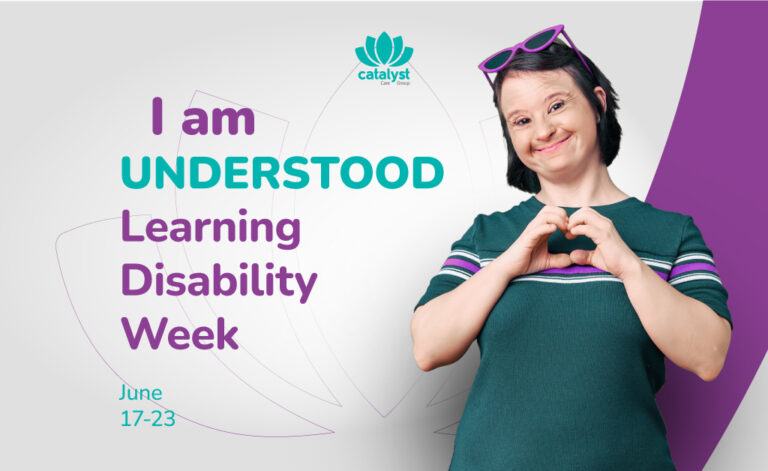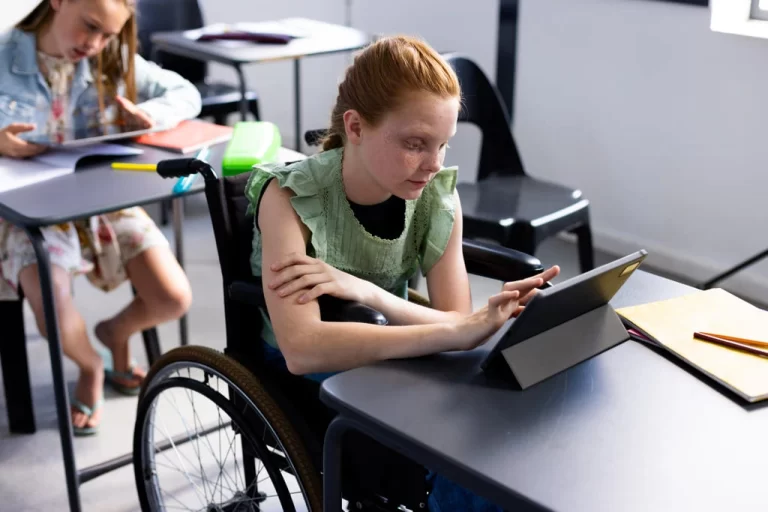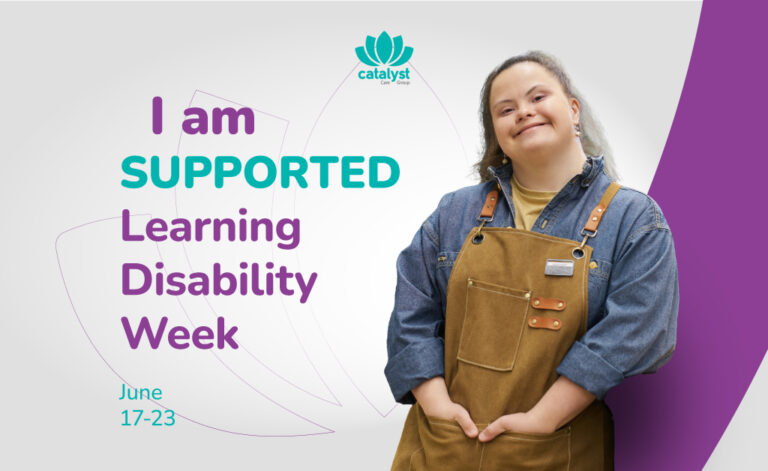There is no effective care without identifying potential risks. The strategic risk assessment process is a critical component of a care plan that truly works.
The aim is to enable people to live active and fulfilling lives while minimising the risks that could impact their physical or mental well-being. Risk assessment involves implementing proactive strategies to reduce the likelihood of a crisis and the need for restrictive practices. This process works in tandem with the development of restrictive reduction plans and crisis management strategies.
Identifying Risks
Identifying risks goes beyond preventing harm – it’s about taking time to understand someone’s needs, experiences, and what helps them feel safe and supported. Instead of focusing on restrictions, this part of the plan explores what might cause distress or unsafe situations, so that support can be thoughtful, respectful, and aligned with the person.
A risk assessment plan brings together insights from the person, their family, and the wider team of managers, PBS team, therapy team and support workers. It’s a shared effort that reflects the person’s lived experience, their rights, and the support that makes sense to them.
Key areas to explore when identifying risks include:
- Past experiences- Looking at previous incidents that led to distress or harm can offer valuable clues. These may include situations where someone felt misunderstood, overwhelmed, or not in control.
- Triggers and early signs- Risk often begins with something small – a sound, a rushed routine, a particular word, or an unexpected change. Recognising these early can help prevent escalation and support emotional regulation.
- Communication needs- Unmet communication needs can increase frustration or distress. Risk identification includes understanding how someone communicates discomfort, asks for space, or expresses unmet needs.
- Health and sensory factors- Pain, fatigue, hunger, side effects from medication, or sensory sensitivities can all impact someone’s ability to cope. These risks are not always visible and should be considered carefully.
- Emotional wellbeing and trauma history- Ongoing experiences like anxiety, low mood, or trauma can shape how someone experiences risk. Exploring emotional needs and understanding trauma responses helps build more compassionate support.
- Relationships and social dynamics- Difficult interactions, unclear boundaries, or feeling isolated can contribute to risk. Support plans should consider the role of relationships in shaping a person’s wellbeing and sense of safety.
- Environment and routines- Busy, loud, or unfamiliar settings may lead to sensory overload or distress. Consistent routines, calm spaces, and clear transitions can reduce this kind of environmental risk.
- Life changes and stressors- Transitions such as moving home, changes in staff, bereavement, or health concerns can increase vulnerability. These stressors should be acknowledged and planned for wherever possible.
Risk identification is not a one-time task – it should be revisited regularly and adapted as things change. When done well, it provides a foundation for support that protects without limiting and promotes both safety and self-direction.

Risk Analysis and Evaluation
Once risks have been identified, the next step is to look more closely at how likely they are to happen, how serious the outcomes could be, and what this means for day-to-day support. This process is not just about measuring risk – it’s about understanding it in context and making space for conversations about what matters to the person.
Risk analysis and evaluation involves:
- Understanding likelihood and impact- Some risks may happen often but have a low impact. Others might be rare but have serious consequences. This part of the process involves thinking carefully about both – not to label someone but to plan for meaningful support.
- Looking at patterns and context- What happens around the person when risk increases? Are there common settings, times of day, or interactions that tend to make things harder? This helps shape support that’s preventative, not reactive.
- Balancing safety with independence- It’s important to avoid overprotecting. Some risks are part of everyday life and part of learning. The aim here is to explore how support can encourage positive risk-taking, where someone feels supported to try new things without being placed in harm’s way.
- Working with the person’s perspective- Risk means different things to different people. What one person sees as unsafe, another might view as part of living freely. Taking time to understand how the person sees the situation helps avoid assumptions and leads to better planning.
- Involving carers and the wider team- Carers often bring insight into day-to-day situations that services might not see. Their input helps create a fuller picture of what support looks like in real life, not just on paper.
- Reviewing current support- Are there existing strategies in place? Are they helping reduce risk, or could they be causing stress or restriction? Analysis includes reflecting on what’s working, what needs adjusting, and where more creative support might be helpful.
Risk evaluation is not about removing every possible danger – it’s about recognising what matters to someone and creating the conditions where they can live well, with the right balance of freedom, care, and support.
Key Elements of a Structured Risk Assessment Plan
Every person’s life comes with its own mix of routines, challenges, and hopes – and the things that feel risky or overwhelming can vary depending on their unique experiences. Risk analysis isn’t just about spotting danger. It’s about understanding what could affect someone’s well-being, emotional state, and day-to-day quality of life.
This means looking at risk in the context of someone’s whole life – where they live, who they spend time with, what matters to them, and what support helps them feel safe. It also means listening to everyone involved in their care:
- People’s personal views
- The people who know them well
- The team around them
Each perspective adds something important.
Some risks will feel more urgent or have a bigger emotional impact. Others may be in the background, affecting mood or relationships over time. Understanding which concerns are weighing most heavily can help shape the right support.
It’s also useful to look at what’s been tried before – both recently and in the past. What’s helped? What’s made things harder? What support has felt respectful and useful, and what hasn’t?
Not everyone will be ready to have these conversations in the same way or at the same time. Someone’s ability to take part might change depending on their feelings, whether they’re tired, anxious, unwell, or struggling to concentrate. If that’s the case, conversations should happen when the person feels most able – with extra support if needed. This might include:
- A person they know and trust
- An Independent Advocate
- An Independent Mental Capacity Advocate (IMCA), if appropriate
At its heart, the risk assessment template is about recognising that people are the experts in their own lives. Risk planning should never be done to someone – it should be done with them and in a way that reflects their voice, reality, and right to live with dignity and control.
Personalised Risk Management Strategies
When creating a personalised risk management plan, it’s essential to be clear about the purpose, approach, and potential outcomes of any action taken. The focus should always be on making informed, thoughtful choices considering the person’s perspective and needs.
To develop an effective care plan, the following questions should be considered:
- What are the goals, and why are they important?
- Understanding what is being achieved and why it matters is key to the planning process.
- How will the goal be reached, and why is this approach chosen?
- It’s important to clearly explain how the actions will be carried out and why this method suits the person’s needs.
- What are the potential benefits of this action?
- Consider the positive outcomes — not only for the person but also for those around them and those providing support.
- What could go wrong?
- Every decision carries risk. It’s crucial to think about the potential downsides for the person and others and anticipate what could lead to harm.
These questions should be answered with the person’s perspective in mind. This process involves supporting the person in understanding both the benefits and the risks in a balanced way. It should also reflect the person’s own wishes and aspirations while considering the impact on others.
When having these discussions with the person, these prompts may help guide the conversation:
- What’s the benefit of doing this?
- What will I gain from this?
- What could happen if I choose not to do it?
- What could happen if I do it?
This ensures that risk management is personalised, respectful, and empowering, supporting people in making informed choices that align with their goals and safety.
Risk Monitoring and Review
Risk monitoring and review is a vital part of ensuring the ongoing effectiveness of a risk management plan. It involves regularly assessing how well the measures are working and making adjustments based on any changes in the person’s circumstances. This process helps address emerging risks, keep the plan relevant, and ensure it supports the person’s safety and well-being.
- Ongoing assessment of risk management strategies- Regularly review and evaluate the strategies to ensure they are effective and aligned with the person’s needs.
- Monitoring medication management- Ensure medications are being taken correctly, monitor for any side effects or changes in condition, and adjust as necessary.
- Proactive adjustments- Identify new risks or challenges early on and adjust the care plan to address them.
- Collaboration with the support team- Work closely with the person and their support network to ensure the care plan stays responsive and effectively meets their evolving needs.
By continuously monitoring and reviewing the plan, any adjustments needed can be made promptly, promoting ongoing safety and well-being.
Care Planning and Risk Assessment with Catalyst Care Group
At Catalyst Care Group, we are committed to ensuring the safety, wellbeing, and ongoing progress of the people we support. Our continuous improvement team conducts weekly risk assessment meetings to closely monitor and evaluate each individual’s care plan. This allows us to make timely adjustments to support their needs, ensuring their safety, fulfillment, and overall progress.
We have a dedicated internal multidisciplinary team (MDT) consisting of:
- Positive Behaviour Support (PBS) practitionersMultimedia specialists
- Community Psychiatric Nurses (CPNs)
This collaborative team works together to deliver high-quality, tailored care, integrating diverse expertise to address the unique needs of the people we support. By maintaining this comprehensive approach, we ensure that every person receives the best care possible, with a focus on their long-term wellbeing and personal goals.
Looking for exceptional care that truly makes a difference? Contact us today to learn how our personalised care plans and expert team can enhance the support you provide.













